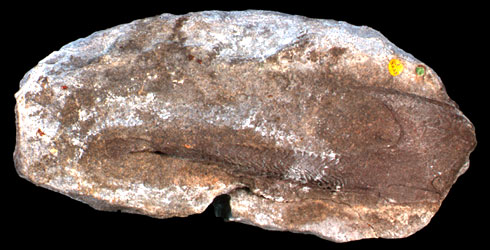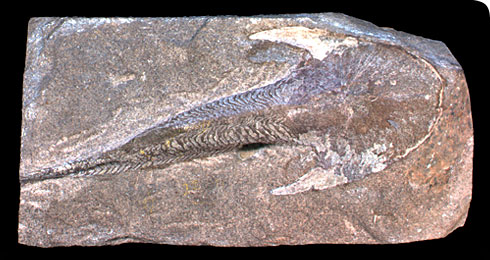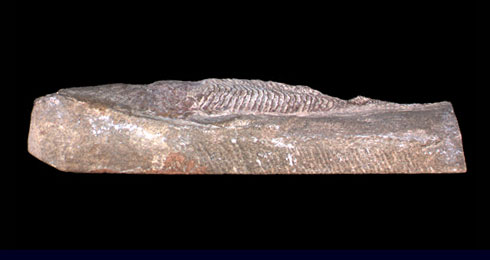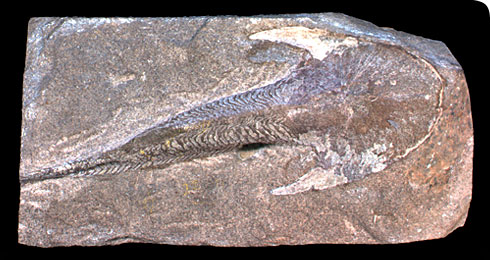Cephalaspis lyelli
Cephalaspis lyelli is an ancient jawless fish that was named and described by the 19th century geologist and biologist Louis Agassiz, in honour of the geologist Charles Lyell.
Agassiz recognised that the broad, shield-like fossils were from fish, rather than molluscs or trilobites, but he could find no trace of jaws in the specimens he examined.
Many palaeontologists concluded that Cephalaspis was jawless, but it was not until the 1920s that the Swedish palaeontologist Erik Stensiö demonstrated conclusively that jaws were absent.
The fish - which is related to hagfish and lampreys that survive today- lived in the Scottish lakes from the middle Silurian to the late Devonian period.
Species detail
Cephalaspis lyelli is known from Glammis, Perthshire Scotland, from the Old Red Sandstone rock formation. It is approximately 400 million years old.
-

Taxonomy
Find out more about Cephalaspis lyelli and its ancient and modern relatives.
-

Biology
Discover more about Cephalaspis lyelli’s unusual appearance.
-

References
Get more information on Cephalaspis lyelli.
Images

Cephalaspis lyelli specimen NHM P 3233. This is the counterpart to the type specimen - it was bought by the Museum in 1882 from the Earl of Enniskillen.

The type specimen of Cephalaspis lyelli, NHM 28007, donated to the museum by Charles Lyell in 1846.

Left hand view of specimen NHM 28007, Cephalaspis lyelli.

Cephalaspis lyelli, as illustrated by Louis Agassiz in his book on fossil fish Recherches sur les Poissons Fossiles in 1835.
Author
David Godfrey
Visitor assistant
Author's quote
"Jawless fish are a fascinating and diverse group! A few years ago I did a dissertation on the people who studied this fish and its relatives. Cephalaspis lyelli is a well-known member of this important group - the closest relatives of the jawed vertebrates."
Toolbox
Glossary
Cornua
The ‘horns’ at the side of the head-shield.
